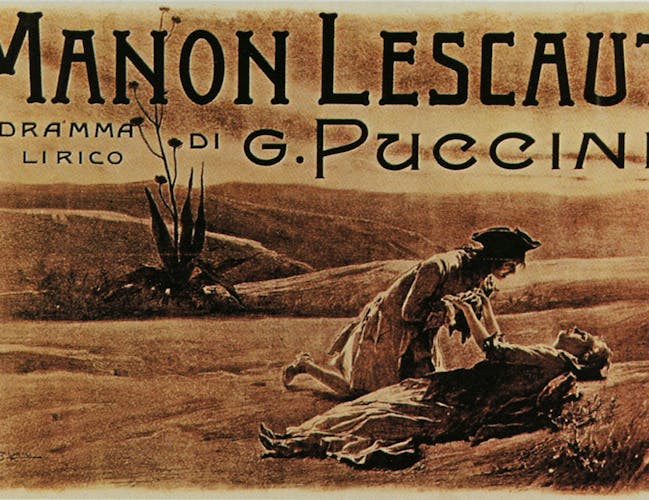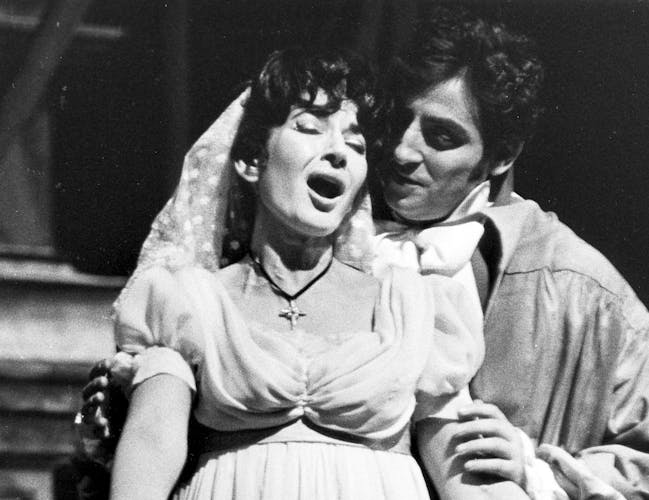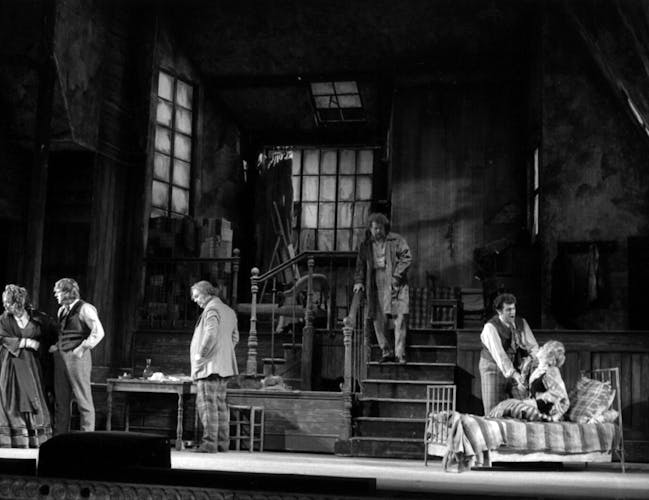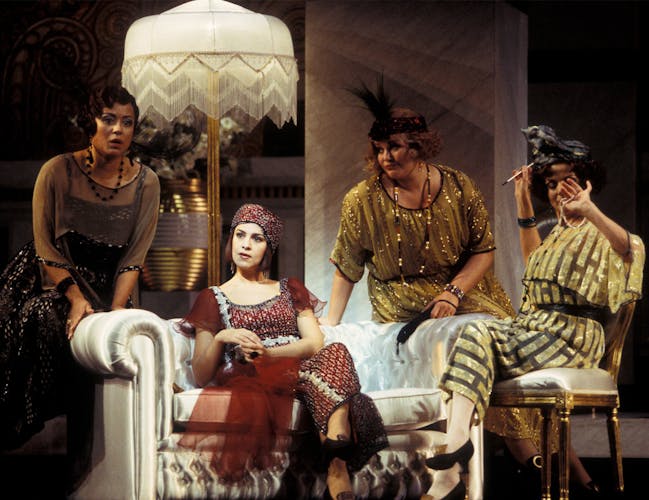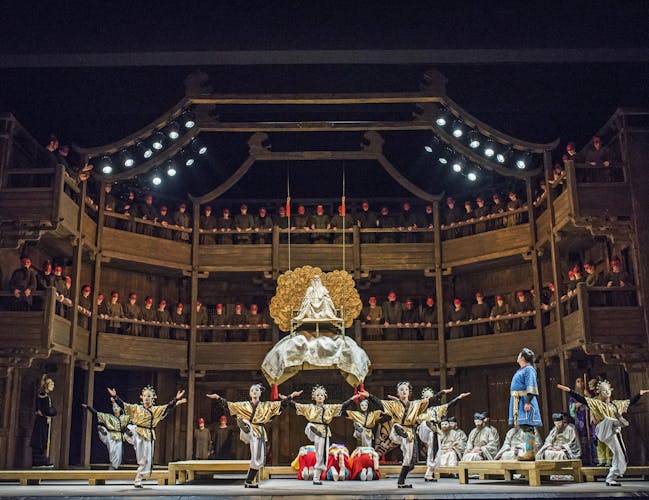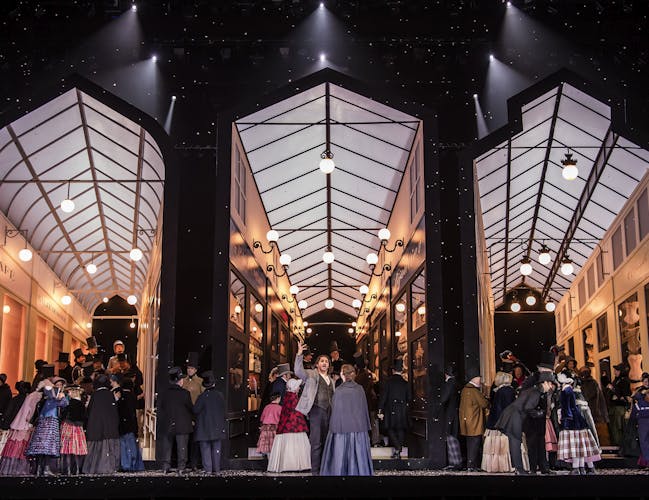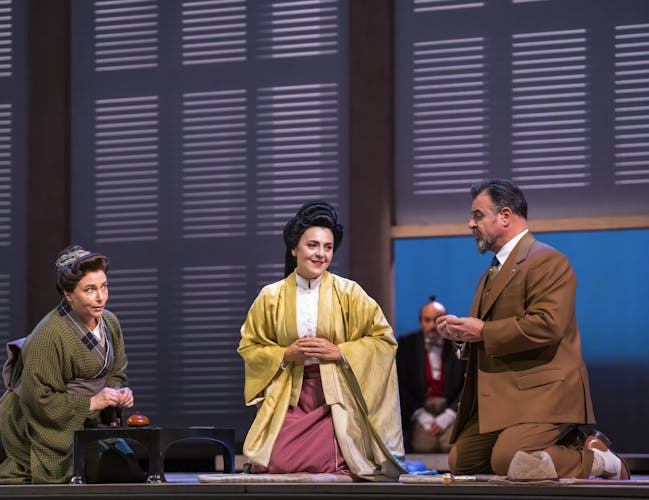Creative Spotlight: Giacomo Puccini
Read more about the life and work of composer Giacomo Puccini.
Giacomo Puccini (1858–1924) is regarded as one of the most influential opera composers of all time. Hailing from a musical family in Lucca, Italy, Puccini rose to prominence as a leading figure in Italian opera. His works are known for their emotional depth, rich orchestration and memorable melodies, and often focus on themes of love, tragedy and human emotion. Puccini’s extraordinary contributions to classical music include the operas La bohème (1896), Tosca (1900) and Madama Butterfly (1904), all of which are repertory staples in opera houses worldwide, including at the Royal Opera House.
Quick Facts
Who was Giacomo Puccini?
Giacomo Puccini was an Italian composer. His ability to capture the human experience through music, along with his innovation in opera, has made him one of the most beloved and frequently performed composers in the history of classical music.
What were Puccini’s most famous operas?
Puccini is perhaps best known for La bohème, about the lives of bohemians set against an increasingly modern Paris, Tosca, about a celebrated opera singer in revolutionary Rome, and Madama Butterfly, about a young Japanese woman and the American husband who abandons her.
What was Puccini’s last opera?
Turandot, memorable for its soaring (and world-famous) aria ‘Nessun dorma’, was Puccini’s twelfth and last opera, which he completed up until the final duet. Puccini’s last complete opera was Il trittico (1918), a triptych of three one-act operas: Il tabarro, Suor Angelica and Gianni Schicchi. The composer’s other operas include his first, Le villi (1884) then Edgar (1889), Manon Lescaut (1893), La bohème (1896), Tosca (1900), Madama Butterfly (1904), La fanciulla del West (1910) and La rondine (1917).
When did Puccini die?
A chain smoker of Toscano cigars and cigarettes, Puccini began complaining of a chronic sore throat in 1923, shortly after beginning work on Turandot. In October 1924 he was diagnosed with throat cancer, and shortly after, on 29 November 1924, he died of a heart attack following complications with his treatment. His last opera, Turandot, was posthumously completed by Franco Alfano.
Early Life
Giacomo Puccini was born on December 22, 1858, in Lucca, Tuscany, into a family with a rich musical heritage. His father, Michele Puccini, was a composer and organist, as were his grandfather, Domenico, and great-grandfather, Antonio. After Michele's death in 1864, Giacomo's mother, Albina Magi, supported his musical education. At the age of 14, Puccini entered the Lucca Conservatory to receive formal music training. He initially studied under various teachers, learning composition and organ, and began composing music at a young age. One of his early compositions, a mass for four voices and orchestra, was written in his teenage years, showing his emerging talent. He later refined his composition skills at the prestigious Milan Conservatory, which led to the completion of his first opera, Le villi (1884).
Puccini's Works
OPERATIC BEGINNINGS: LE VILLI AND EDGAR (1884–1889)
Puccini is arguably the world’s most popular opera composer – but it took several years for him to establish himself. From his adolescence, Puccini was drawn to music; shortly after graduating from the Milan Conservatory, he began work on his first opera Le villi (the fairies).
The score for Le villi demonstrates many of the skills that led to Puccini becoming Italy’s greatest 20th-century opera composer – following in the footsteps of his predecessor Giuseppe Verdi – including melodic originality, a wonderful dramatic instinct and rich orchestration. Puccini wrote Le villi for the Sonzogno Competition, a contest organised by Italian publisher Edoardo Sonzogno, but was disqualified as the manuscript was illegible. However, Le villi’s first public performance led Verdi’s publisher, Giulio Ricordi, to take Puccini on. Unfortunately, Puccini had much less success with his second opera, the melodramatic four-act opera Edgar (1889).
RISE TO FAME: MANON LESCAUT (1893)
Puccini’s third opera, Manon Lescaut (1893) – based on Abbé Prevost’s 1731 novel of the same name, and the first opera where Puccini selected the subject himself – is considered his first masterpiece. Puccini ingenuously adapted symphonic structures to fit the flow of the drama, telling the story without compromising melodic beauty. Manon Lescaut confirmed Puccini’s skill as a creator of memorable characters, particularly heroines. Indeed, Manon became the first in a line of complex, sympathetic (and doomed) women in Puccini operas! Still, Puccini faced difficulties in composition, including resistance from Ricordi, as French composer Jules Massenet had already written an opera based on Prevost’s novel in 1880. Thankfully, Manon Lescaut’s premiere on 1 February 1893 at the Teatro Regio, Turin was a great triumph.
THREE MASTERPIECES: LA BOHÈME, TOSCA AND MADAMA BUTTERFLY (1896-1904)
In 1893, Puccini began a fruitful collaboration with the librettists Giuseppe Giacosa (also a poet and playwright) and Luigi Illica, with whom he wrote La bohème (1896), Tosca (1900) and Madama Butterfly (1904). La bohème is set in 1830s Paris and tells the story of a group of penniless artists and a young seamstress named Mimì. Puccini brought both the opera’s central love story and mid-19th century to life, with brilliantly varied orchestration and rapid shifts from comedy to tragedy. Although La bohème had a mixed reception at its premiere, it soon became one of the world’s most popular operas, with recognisable arias including ‘Si mi chiamano Mimì’ (Yes, they call me Mimì) and ‘Quando m’en vo’, also known as Musetta’s waltz. La bohème is currently the most performed opera at the Royal Opera House.
In contrast to Bohème’s delicate lyricism and humorous yet heartbreaking depiction of love and friendship, Tosca is a fast-paced drama featuring torture, murder and suicide. The music for Baron Scarpia, Puccini’s great operatic villain (introduced in the opening notes of the opera) is dark and terrifying – but Puccini also wrote passages of great melodic beauty for the lovers Cavaradossi and Tosca. Tosca’s daring harmonic language and dark subject matter have led to it often being hailed as ‘the first modern opera’. The titular heroine is another of Puccini’s complex female characters, and her lament ‘Vissi d’arte’ (I lived for art) is amongst the most beloved arias in opera.
For Madama Butterfly, Puccini moved his setting to Japan, telling the story of an idealistic Japanese geisha who marries and is abandoned by an American naval officer. Cio-Cio San’s (Butterfly) Act II aria, ‘Un bel dì, vedremo’ (One fine day we’ll see), captures her longing as she waits for her husband to return. Puccini showed immense tenderness in his depiction of Cio-Cio-San, one of his greatest and most heartbreaking characters. While composing, Puccini studied traditional Japanese music to create a vivid sense of place. Although Madama Butterfly had an unsuccessful premiere and Puccini revised the score several times, it soon became nearly as popular as La bohème and Tosca and is among the ten most-performed operas in the world today.
NEW FRONTIERS: LA FANCIULLA DEL WEST (1910)
Following the death of his librettist Giacosa, Puccini’s productivity slowed as he struggled to find new librettists and subjects. He eventually found inspiration with La fanciulla del West (1910), set in California at the time of the Gold Rush. Fanciulla is one of Puccini’s most musically complex operas: though there is much melodic beauty, there are also very few arias, with the orchestra instead playing a key role in the action. As with Madama Butterfly, Puccini created an effective sense of place in each act, from the bustle of the saloon bar in Act I to the misty dawn in the Californian forest in Act III.
OPERATIC OPERETTA: LA RONDINE (1917)
In contrast to the epic scale of La fanciulla del West, Puccini’s next opera, La rondine (1917) has a romantic and ironic plot. Puccini’s gifts as a melodist come to the fore in this opera, and he also makes playful use of various dance forms, including the waltz, the tango and the foxtrot. The opera had difficult beginnings: it was originally intended to have its premiere in Vienna, but World War I made this impossible as Italy and Austria were on opposite sides. La rondine was eventually staged in Monte Carlo in 1917. The opera’s understated plot, and public perception in Italy that Puccini had been unpatriotic during World War I, led to a mixed reception: it was many years before La rondine gained a permanent place in the repertory.
A TRIUMPHANT TRIPTYCH: IL TRITTICO (1918)
While he completed La rondine, Puccini was already working on his next ambitious project. Il trittico (1918) consists of three one-act operas: Il tabarro, a melodrama set on a barge on the Seine in early 20th-century Paris; Suor Angelica, the tragic story of a nun mourning the loss of her child; and Gianni Schicchi, a sparkling comedy about a clever trickster and a greedy Florentine family.
In Il tabarro (The cloak), Puccini again evokes the world of working-class Paris, from the opening dreamy setting of the Seine in the evening to the use of popular song and the savagery of the final scene. In Suor Angelica (Sister Angelica) each of the principal nuns and the cruel princess (Sister Angelica’s aunt) have distinct personalities and motivations. Puccini writes exquisite melodies for Sister Angelico, particularly in her lament ‘Senza mamma’ (Without a mother). Gianni Schicchi is Puccini’s only large-scale comedy and is brilliantly successful in its musical contrasting – particularly of the grasping Donati family, the cunning Schicchi and the ardent lovers Rinuccio and Lauretta – and in its witty orchestration. The aria ‘O Mio babbino Caro’ (Oh my dear Papa) is sung by Lauretta as she and Rinuccio’s families’ scheming drives the couple apart. It has since become a popular recital piece for many singers, including Maria Callas.
PUCCINI’S FINAL OPERA: THE UNFINISHED TURANDOT (1926)
In the score for his final work Turandot (1926), Puccini made use of several traditional Chinese melodies, some acquired via a musical box. The opera also contains some of Puccini’s most original orchestration, and a greater and more innovative use of the chorus compared to his previous operas. This, along with the opera’s fairy tale-esque plot, in which a resolute hero teaches a murderous ‘ice princess’ how to love, make Turandot one of Puccini’s most ambitious creations, and his most organic integration of music and drama. The ever-popular aria ‘Nessun dorma’ appears in Act III, as the mysterious hero Calaf waits for dawn, singing of his victory over the cold-hearted princess, Turandot.
Puccini died in 1924, leaving Turandot without a completed final duet. The opera’s 1926 world premiere presented the work as Puccini left it, with conductor Arturo Toscanini famously laying down his baton to declare ‘Here the maestro laid down his pen’. But a younger composer, Franco Alfano, had been authorised to complete an ending from Puccini’s sketches and his version quickly became standard in performances. Today, Turandot is one of the most admired of Puccini’s operas, and ‘Nessun dorma’ one of the most recognisable arias in the world.
THE BIRTH OF VERISMO
Verismo was an Italian opera movement of the late 19th and early 20th centuries, that emphasised realism, raw emotion and stories about ordinary people rather than nobility or mythology. Inspired by literary naturalism, verismo operas featured intense drama, passionate melodies and rich orchestration. Puccini became one of verismo’s most renowned composers by blending gritty realism with lyrical beauty and psychological depth: his ability to balance the drama of human emotion with melody helped solidify verismo's lasting influence.
Personal Life
Puccini's personal life was as dramatic as his operas. He had a long affair with Elvira Gemignani, the wife of a Lucca merchant, which led to scandal. When Elvira’s husband died in 1904, she and Puccini married, but their relationship remained troubled due to his numerous affairs. One of the most infamous incidents involved their maid, Doria Manfredi, whom Elvira accused of seducing Puccini. Doria later died by suicide, and it was revealed she was innocent, leading to Elvira’s brief imprisonment for defamation. Despite his turbulent marriage, Puccini maintained an opulent lifestyle, enjoying luxury cars, hunting and a retreat at Torre del Lago. In 1903, he suffered a serious car accident, leaving him with a fractured leg and a long recovery, which slowed his work. Puccini had one son, Antonio, with Elvira, though rumours of other illegitimate children persist.
Politically, the composer remained largely neutral, which led to criticism from both conservatives and progressives. This detachment allowed Puccini’s music to transcend political divides but also made him a target for those who sought stronger ideological commitments from public figures, as they’d found in his famed Italian predecessor, Giuseppe Verdi.
Gallery
DEATH AND LEGACY
On 29 November 1924, Puccini died in Brussels from a heart attack, following complications from throat cancer treatment. He had undergone experimental radiation therapy, but his condition worsened, and he passed away before completing his final opera, Turandot. Puccini’s legacy as one of opera’s greatest composers endures. His ability to blend emotional depth, rich orchestration and unforgettable melodies revolutionised Italian opera. Masterpieces like La bohème, Tosca and Madama Butterfly remain universally loved and performed, ensuring the Italian composer’s music continues to captivate audiences worldwide.
Watch more
Watch on Stage this Season
Watch on Stream
Royal Opera House Covent Garden Foundation, a charitable company limited by guarantee incorporated in England and Wales (Company number 480523) Charity Registered (Number 211775)


